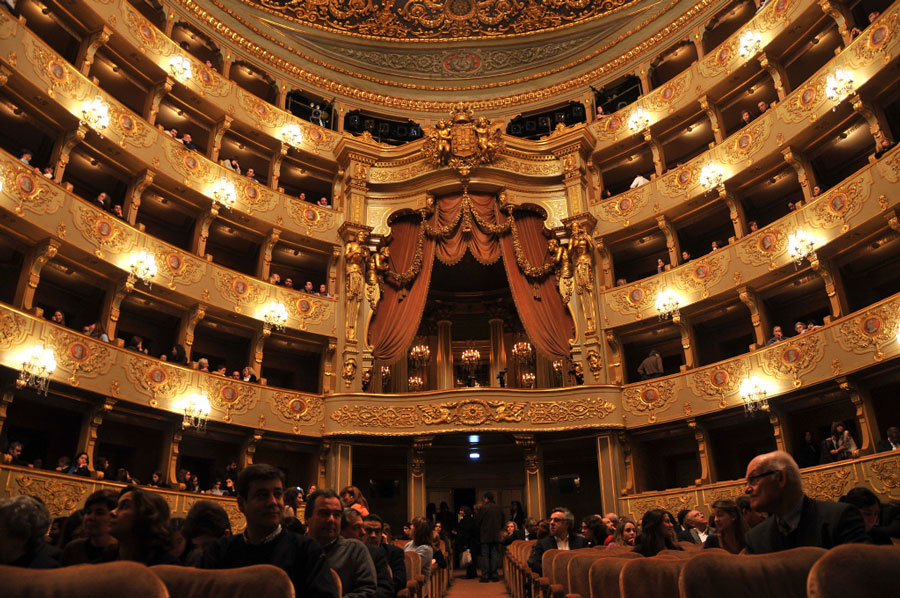 Teatro Nacional de São Carlos
Teatro Nacional de São Carlos
One of Europe's most famous opera houses, dating from 1793 and beautifully preserved.
Teatro Nacional de São Carlos • Rua Serpa Pinto, 9 • 1200 – 442 Lisboa • Portugal • Tel.: +351 (0)213 253 045, +351 (0)213 253 046 • visitas(at)saocarlos.pt • http://tnsc.pt
Visits: Mon - Fri 10:30 - 18:30, Sat / Sun / Holidays 10:30 - 16:30; guided tours at 11:00 and 16:00; technology tours Tues and Thurs at 11:00 and 16:00
Turismo de Lisboa
Visitors & Convention Bureau
Tel.: +351 (0)210 312 700
atl(at)visitlisboa.com
www.visitlisboa.com
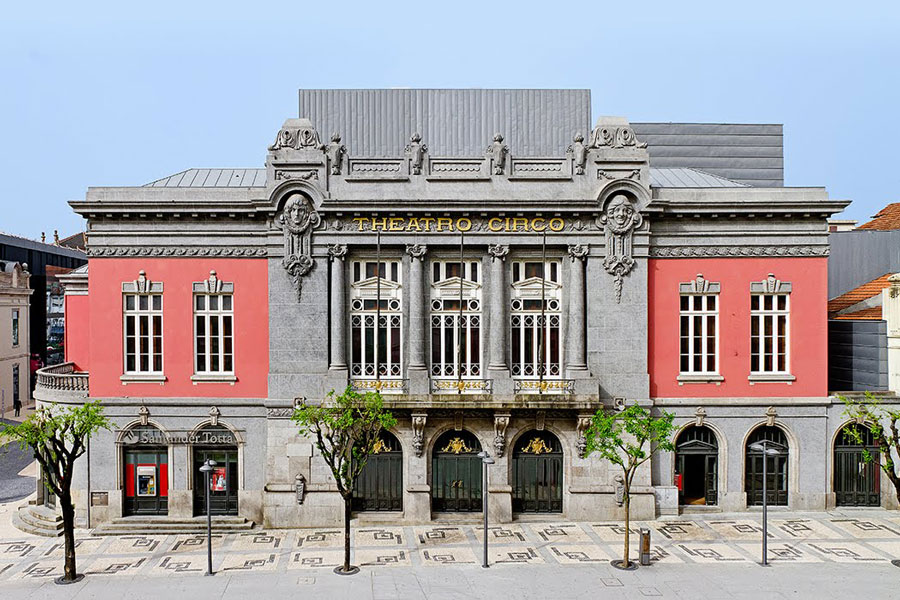 Theatro Circo
Theatro Circo
A unique circus theatre, built in 1915.
Theatro Circo de Braga • Avenida da Liberdade, 697 • 4710-251 Braga • +351 (0)253 203 800 • theatrocirco(at)theatrocirco.com • www.theatrocirco.com/en
Visits: public tours see website; groups on appointment
Posto de Turismo
+351 (0)253 262 550
turismo(at)cm-braga.pt
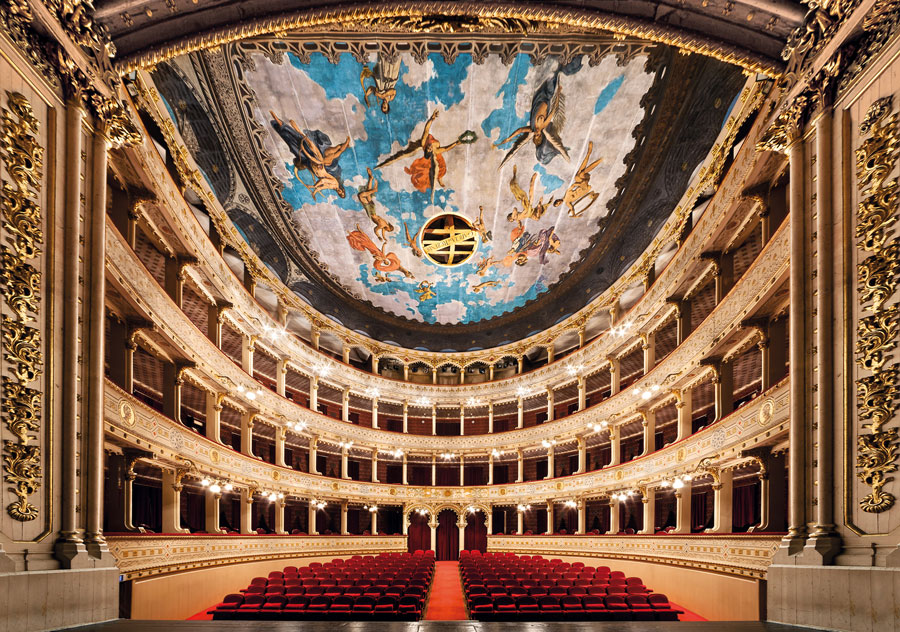 Teatro Garcia de Resende
Teatro Garcia de Resende
Inaugurated in 1892, it is the best example of Neo-Baroque style in Portugal.
Teatro Garcia de Resende • Praça Joaquim António de Aguiar • 7000-510 Évora • Portugal • Tel.: +351 (0)266 703 112 • geral(at)cendrev.com • www.cendrev.com/informacoes_contactos.php
Visits: public tours see website, groups on appointment
Posto de Turismo
Tel.: +351 (0)266 777 072
postodeturismo(at)cm-evora.pt
www2.cm-evory.pt/guituristico
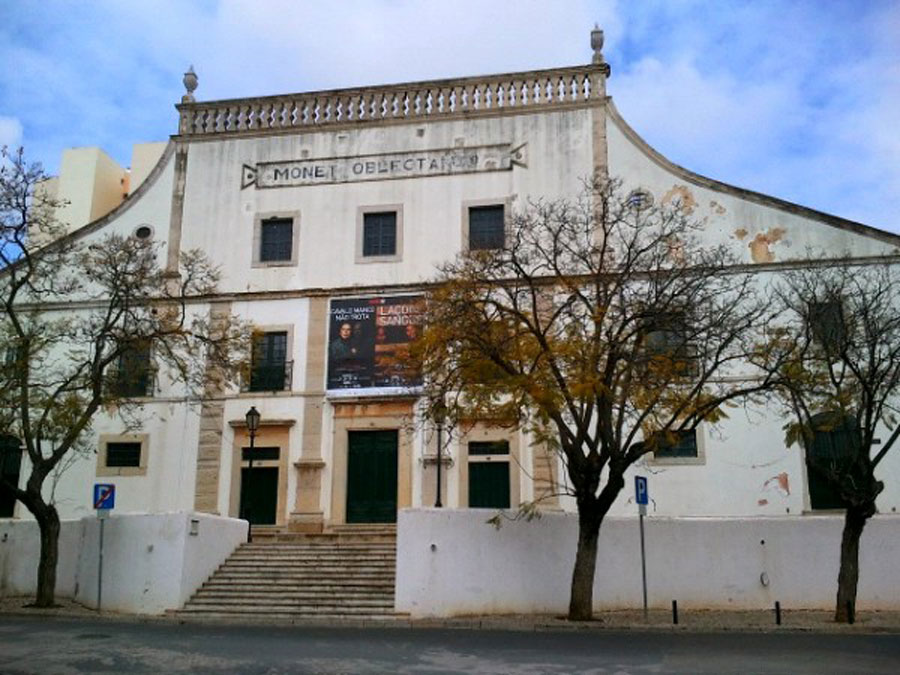 Teatro Lethes
Teatro Lethes
A small but really exceptional theatre (1845/1908) in a former Jesuit school.
Teatro Lethes • Rua de Portugal, 58 • 8000-281 Faro • Portugal • Tel.: +351 (0)289 878 908 • geral(at)actateatro.org.pt • http://www.actateatro.org.pt
Visits: on appointment
Posto de Turismo de Faro
Tel.: +351 (0)289 803 604
www.cm-faro.pt
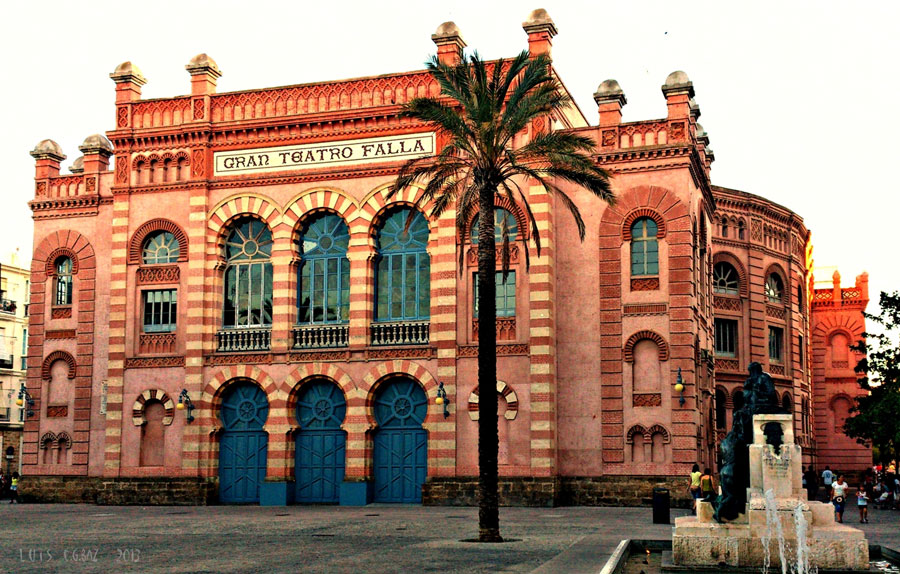 Gran Teatro Falla
Gran Teatro Falla
Built in Moorish style in 1910, it is named after the great Spanish composer Manuel de Falla (1876-1946) who was born in Cadiz.
Gran Teatro Falla • Plaza Fragela, s/n • 11003 Cádiz • Tel.: +34 (0)956 22 08 34 • granteatrofalla.cultura(at)telefonica.net • http://laciudad.cadiz.es/programacion-gran-teatro-falla.asp
Visits: on appointment
Centro de recepción de turistas
+34 (0)956 241 001
info.turismo(at)cadiz.es
www.cadiz.es
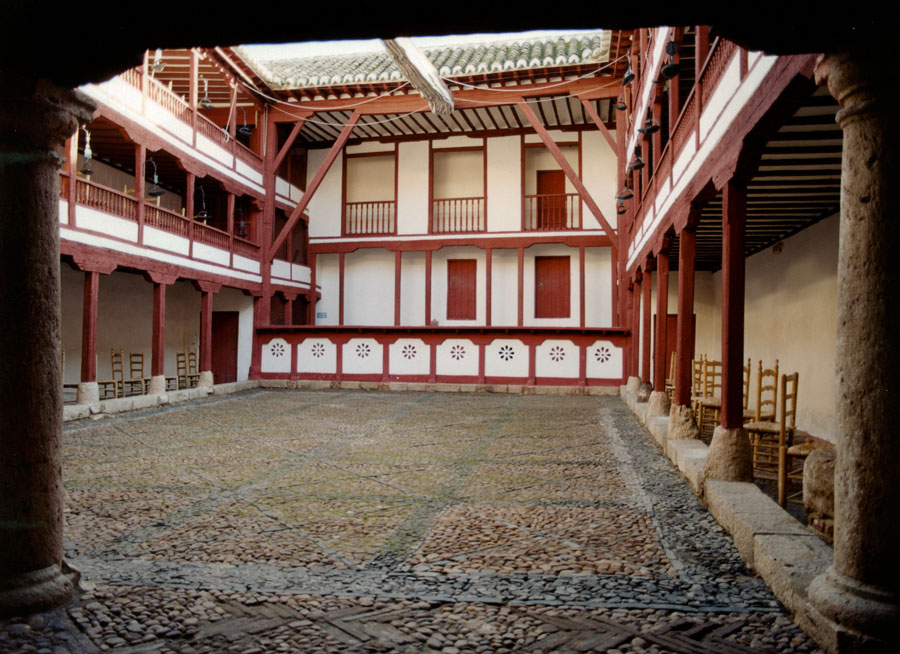 Corral de Comedias
Corral de Comedias
The oldest theatre in Spain and the only preserved Corral de Comedias in the world. In this courtyard theatre from 1620 one can experience what theatre was like in the Golden Age of Spanish literature, the times of Cervantes, Lope de Vega, Calderón de la Barca and Tirso de Molina.
Corral de Comedias • Plaza Mayor, 18 • 13270 Almagro • Ciudad Real • Spain • Tel.: +34 (0)926 86 15 39 • www.ciudad-almagro.com/donde/1328709263/Corral-de-Comedias
Visits: daily at varying opening times; please consult website for details
Almagro turismo
Tel.: +34 (0)926 86 07 17
turismo(at)ciudad-almagro.com
www.ciudad-almagro.com
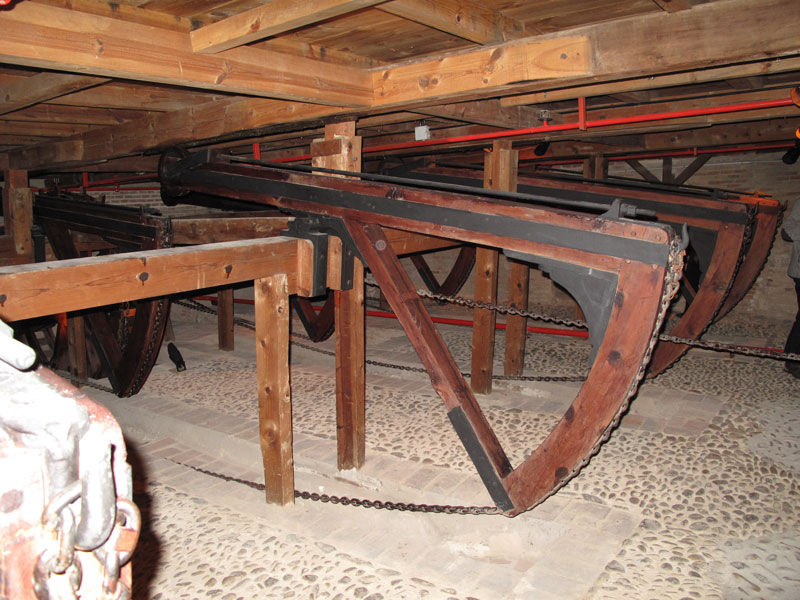 Teatro de Rojas
Teatro de Rojas
The theatre is dedicated to Francisco de Rojas Zorrilla (1607-1648), dramatist from the Spanish Golden Age, born in Toledo. It was built on the site of a Corral de Comedias (1575) and its successor, a comedy theatre (1630). Designed by Raimundo Amador de los Rios, the present theatre opened on 19 October 1878.
Today, the Teatro de Rojas is the only theatre in Spain and one of very few in Europe that still features its original stage machinery, filling three storeys below the stage. Additionally, it houses a unique construction from the same time that allows elevating the entire parterre to stage level. All in perfect working condition and to be discovered during guided tours.
Teatro de Rojas • Plaza Mayor, s/n • 45001 Toledo • Spain • Tel.: +34 (0)925 223 970 (10:00-14:00) • inforojas(at)telefonica.net • www.teatroderojas.es
Visits: frequent guided tours, please contact the theatre; group tours on appointment
Patronato Municipal de Turismo
Tel.: +34 (0)925 254 030
info(at)toledo-turismo.com
www.toledo-turismo.com
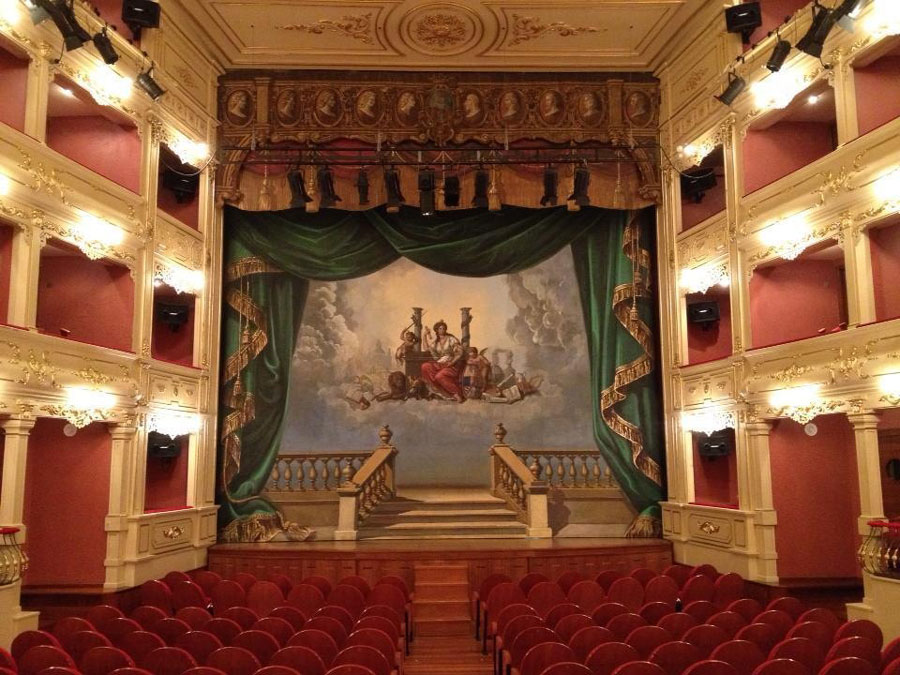 Teatre Principal
Teatre Principal
The oldest still operating opera house in Spain. Built in 1829 by the Italian Giovanni Palagi, on the site of a former theatre, within an old bastion of the city walls. The decoration works were done by the Ciudadela artist Andrés Galbis. The neoclassical façade was added thirty years later, in 1859. After 150 years of operation, extensive restoration works gave back the charm and splendour of the 1880s to the building.
Teatre Principal de Maó • Direcció Costa Deia, 40 • Població Maó • Província Balears • Spain • Tel.: +34 (0)971 355 603 • e-mail form on website • www.teatremao.com
Visits: guided tours and group tours, please contact the theatre
Oficina de información turística
Tel.: +34 (0)7701 971 363 790
infomenorcamao(at)menorca.es
www.menorca.es
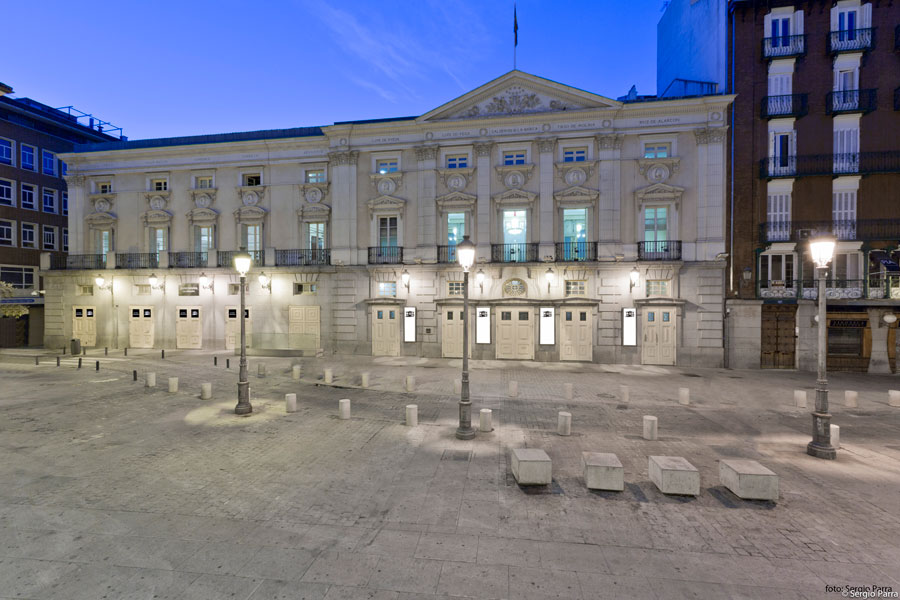 Teatro Español
Teatro Español
All Spanish theatre history can be told by the “Spanish Theatre”, as it started its life already in the 16th century!
Teatro Español • Calle Príncipe, 25 • 28012 Madrid • Spain • Tel.: +34 (0)91 360 14 84 (11:30-13:30) • www.teatroespanol.es
Visits: guided tours Tuesday to Friday at 12:00 noon; groups on appointment
Centro de Tourismo
Tel.: +34 (0)91 454 44 10
turismo(at)esmadrid.com
www.esmadrid.com/centros-de-informacion-turistica/
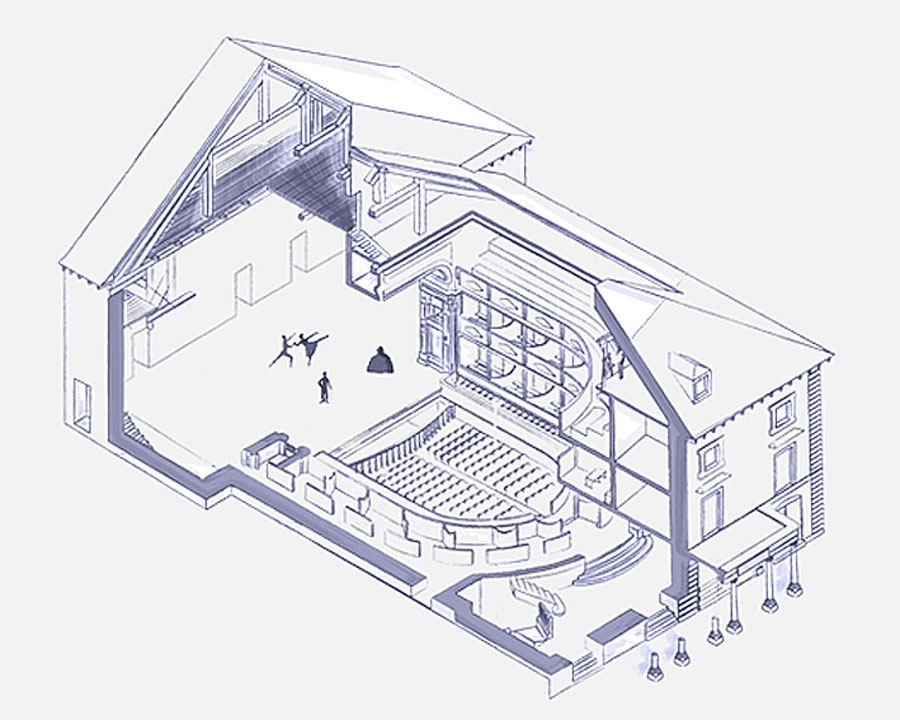 Real Coliseo de Carlos III
Real Coliseo de Carlos III
The best example of a royal court theatre in Spain, inaugurated in 1771.
Real Coliseo de Carlos III • Calle Floridablanca, 20 • 28200 San Lorenzo de El Escorial • Spain • Tel.: +34 (0)91 890 44 11, +34 (0)91 890 45 44 • teatro.coliseocarlos38(at)madrid.org • www.madrid.org/clas_artes/teatros/carlosIII/index.html
Visits: on appointment
Tourismo
Tel.: +34 (0)918 905 313
info(at)sanlorenzoturismo.org
www.sanlorenzoturismo.org
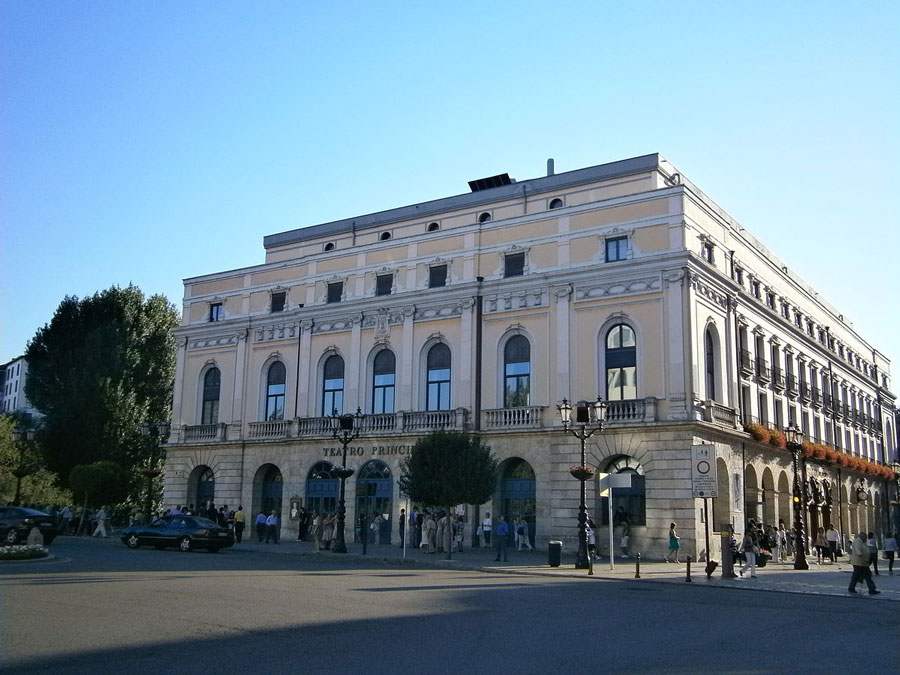 Teatro Principal
Teatro Principal
Opened in 1858, it is the best preserved theatre from the reign of Queen Isabella II.
Teatro Principal • Plaza del Mío Cid s/n • 09003 Burgos • Spain • Tel.: +34 (0)947 28 88 73 , +34 (0)947 28 88 40 • imc(at)aytoburgos.es • www.aytoburgos.es
Visits: on apppointment
Oficina de información turística
Tel.: +34 (0)947 203 125, +34 (0)947 201 846
oficinadeturismodeburgos(at)jcyl.es
www.turismocastillayleon.com
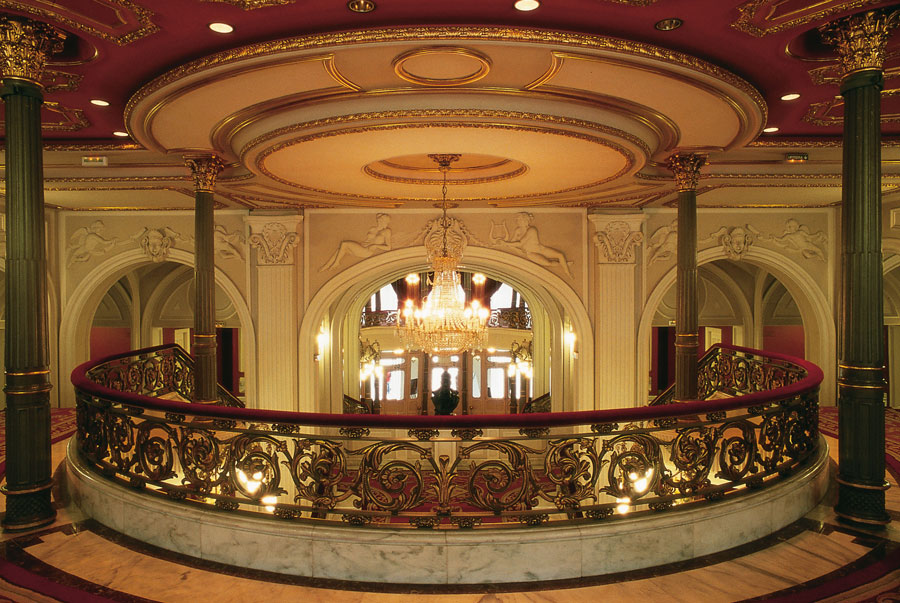 Teatro Arriaga
Teatro Arriaga
The best example of Neo-Baroque style in Spain. Inaugurated in 1890 and named after the Bilbao composer Juan Crisóstomo de Arriaga.
Teatro Arriaga • Plaza Arriaga, 1 • 48005 Bilbao • Spain • Tel.: +34 (0)944 79 20 36 • informacion(at)teatroarriaga.com • www.teatroarriaga.com
Visits: on appointment
Tourist Info
Tel.: +34 (0)944 795 760
informacion(at)bilbaoturismo.bilbao.net
www.bilbao.net/bilbaoturismo
Circuit Ibérique |
Le Circuit Ibérique de la Route européenne des théâtres historiques présente les théâtres historiques les plus intéressants et bien conservés en Portugal et en Espagne. (Suivez le circuit avec votre flèche, s.v.p., pout obtenir des informations sur les théâtres.)
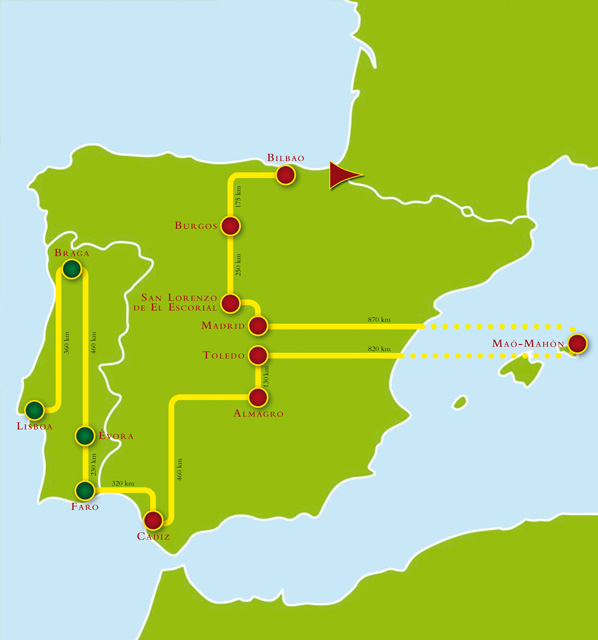
L’un des bâtiments d’opéra très fameux de l’Europe se lève ici : le Teatro Nacional de São Carlos. Inauguré en 1793, il a gardé toute sa beauté.
Dans le nord de Portugal, à Braga, se trouve le Theatro Circo (1915), un théâtre unique avec manège.
Dans la partie centrale du pays, à la ville médiévale d’Évora, le Teatro Garcia de Resende (1892) est l’exemple plus beau du style néobaroque en Portugal.
Et dans le sud, un petit théâtre exceptionnel se trouve à Faro : le Teatro Lethes (1845/1908).
Encore dans le sud, nous traversons la frontière, continuons en Espagne et arrivons à Cadiz. Cette partie de l’Espagne a été gouvernée pour longtemps des Arabes, et leur style a continué à influencer les arts. Un exemple fascinant est le Gran Teatro Falla, construit en style moresque en 1910.
La petite ville d’Almagro garde le théâtre le plus vieux d’Espagne : le seul Corral de Comedias encore préservé. Ce théâtre a été construit dans une cour en 1620, et ici on peut encore faire l’expérience du théâtre de l’âge d’or de la littérature espagnol, l’époque de Cervantes, Lope de Vega, Calderón de la Barca et Tirso de Molina.
Pas loin, à Toledo, patrimoine mondial de l’Unesco, le Teatro de Rojas (1879) a conservé un double trésor : toute la machinerie de scène originale et de plus une machinerie unique qui lève le parterre au niveau de la scène !
Une incursion en île de Minorque introduit le bâtiment d’opéra le plus vieux en Espagne, le Teatre Principal (1829) à Maó-Mahón.
Retournant à Madrid, le Teatro Español nous attend. Il commençait sa vie au 16ème siècle comme un Corral de Comedias, et donc toute l’histoire du théâtre en Espagne peut être racontée par ce théâtre !
Au nord de Madrid, la ville de San Lorenzo de El Escorial ne présente pas seulement un patrimoine mondial, le monastère et châteaux très fameux, mais aussi le théâtre de cour Real Coliseo de Carlos III, inauguré en 1771.
Encore plus au nord, à Burgos, se trouve le théâtre meilleur conservé de l’époque de la Reine Isabella II : le Teatro Principal (1858).
Le Circuit Ibérique termine à Bilbao avec le Teatro Arriaga (1890), le plus bel exemple du style néobaroque en Espagne.
 Deutsch
Deutsch English
English Français
Français
